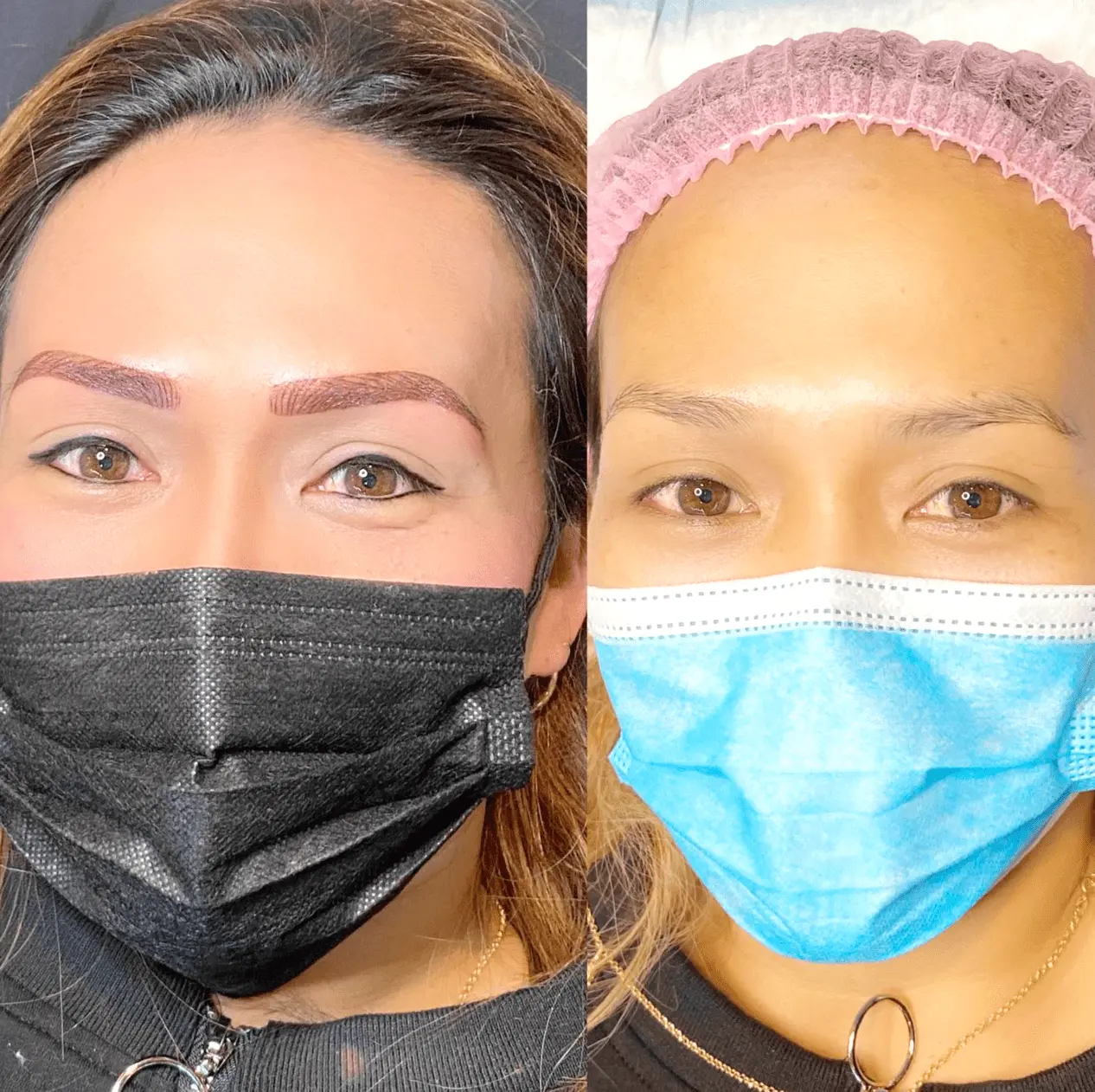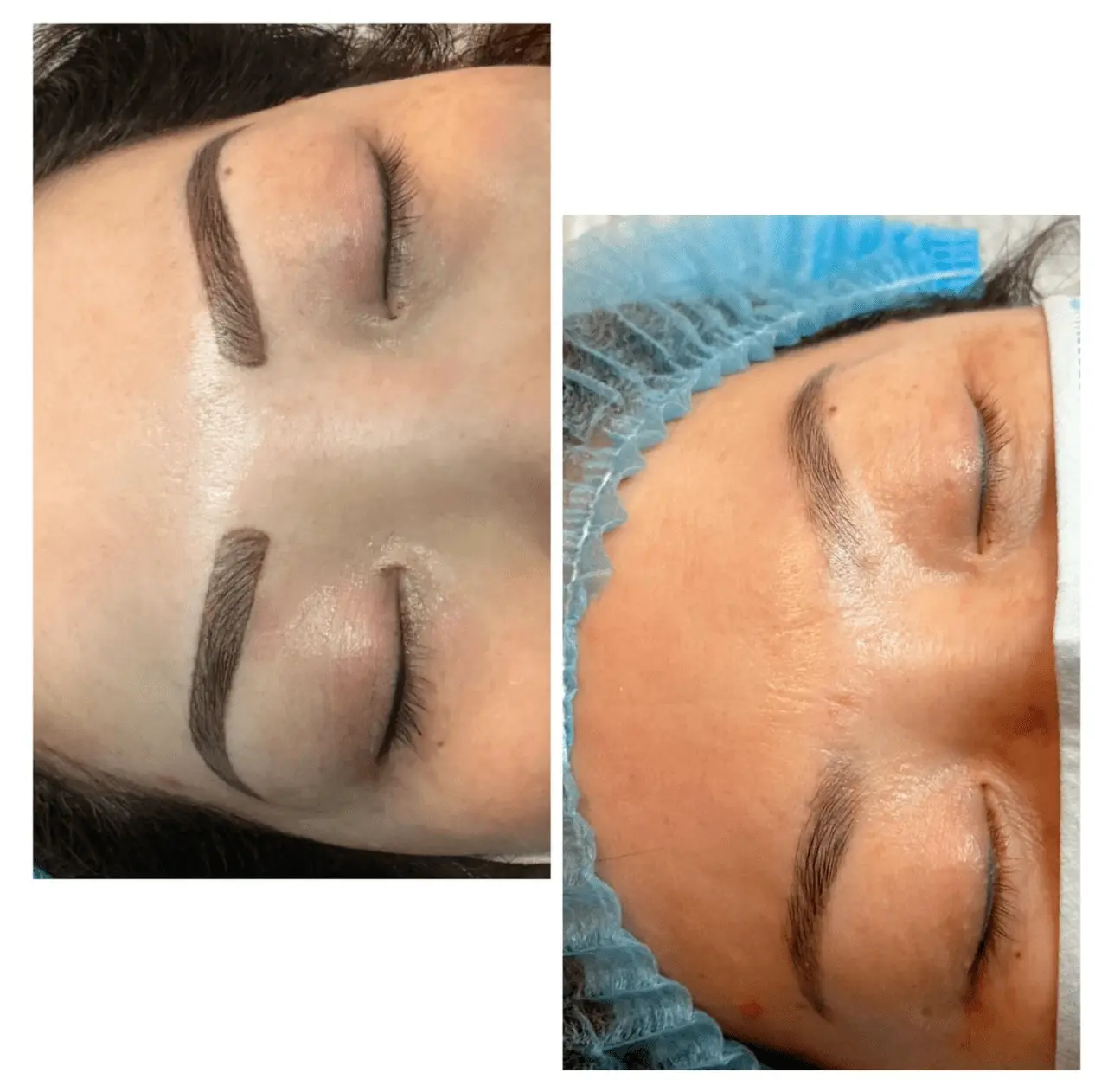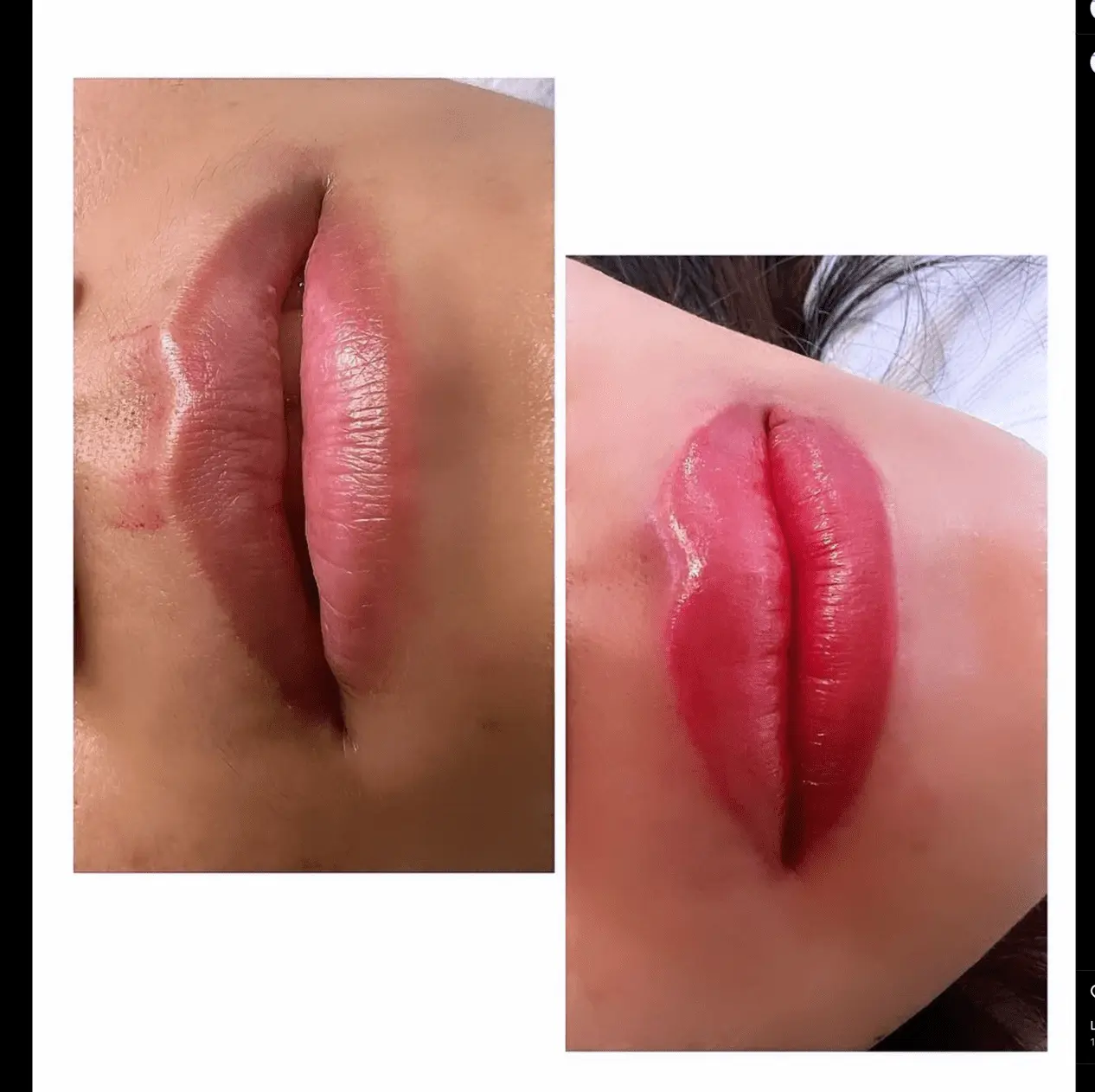If you have eyebrow tattoos that you want to remove or lighten, this guide is for you. We will cover everything you need about saline tattoo removal Melbourne, and lighting.

What is the process of saline eyebrow tattoo removal?
Saline eyebrow tattoo removal is a non-invasive procedure that involves injecting a saline solution into the skin to help remove unwanted tattoos by lifting the pigment out of the skin.
Can you explain how saline eyebrow tattoo removal works?
The high salt concentration in saline solution draws water and pigment to the skin’s surface to be removed by scabbing. Unlike laser removal, saline removes pigment by pushing it out of the skin. Saline can remove all colours, even white pigment, and works at any depth in the skin.
Saline tattoo removal Melbourne involves using a hypertonic solution injected into the skin with a fine needle. This solution draws out the pigment by creating controlled damage to the skin, allowing it to penetrate and remove the pigment.

Benefits of saline eyebrow tattoo removal
Saline eyebrow tattoo removal is considered a safe and effective method for removing unwanted cosmetic tattoos, such as eyebrows, lips, and eyeliner tattoos. This non-invasive procedure does not involve cutting or scarring, making it less painful and reducing the risk of complications compared to other tattoo removal methods.
Risks and side effects of saline eyebrow tattoo removal
Saline eyebrow tattoo removal can result in temporary redness, swelling, mild pain, discomfort, scarring, or skin discolouration in rare cases.
Information on what will occur during the procedure
The tattoo area is cleaned and numbed with a local anesthetic before the procedure. A saline solution is injected into the skin with a fine needle, and the duration of the procedure varies depending on the tattoo’s size.

Post-procedure care guidelines for saline cosmetic tattoo removal
- It is important to keep the area clean after the procedure. Avoid touching or rubbing the area to reduce the risk of infection, and gently clean it with mild soap and water if needed.
- Avoiding sun exposure after treatment is recommended, as it can lead to irritation and potentially increase the risk of scarring. Protective clothing or sunscreen should be used to shield the area from the sun.
- Avoiding strenuous activity to prevent irritation and promote proper healing of the treated area is recommended.
- It is recommended to avoid hot showers or baths in the days following the procedure to reduce the risk of irritation and infection in the affected area.
- During the healing process, scabs may form on the treated area. It is recommended to avoid picking at these scabs to prevent scarring and expedite the healing process.
- Contact your provider for any necessary information or assistance regarding the healing process. They can offer aftercare guidance and ensure the treated area’s proper healing.